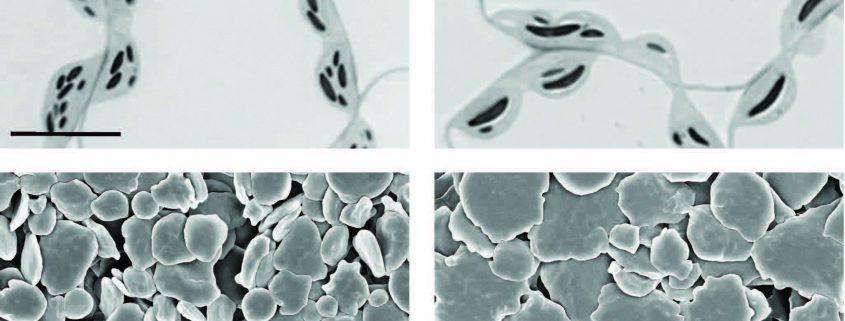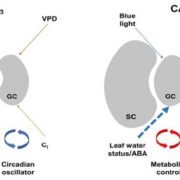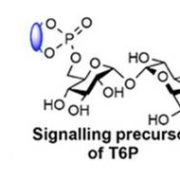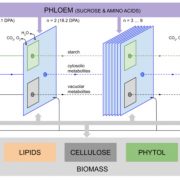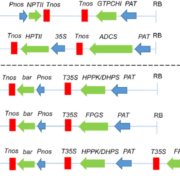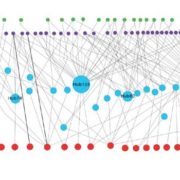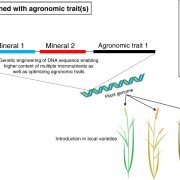Secret Talents: STARCH SYNTHASE 5—Not an Enzyme, but Very Active!
Abt et al. found that Arabidopsis SS5, a protein homologous to typical starch-synthesizing enzymes, is itself enzymatically inactive, but rather has an important role in the starch granule initiation process. Plant Cell https://doi.org/10.1105/tpc.19.00946
By Melanie R. Abt and Samuel C. Zeeman, Institute of Molecular Plant Biology, ETH Zurich, Universitätstrasse 2, 8092 Zurich, Switzerland.
Background: During the day, plants produce starch granules in their chloroplasts from photoassimilated carbon, and at night, they degrade this starch to fuel energy-consuming processes. Each chloroplast produces several granules with the help of starch synthases (SSs), enzymes that make the components of starch. Plant genomes encode several SSs, whose roles are generally well understood. A notable exception is STARCH SYNTHASE 5 (SS5), which appears quite different from the other SSs and, like the process of starch granule initiation, has not been well characterized.
Questions: How is SS5 is involved in starch metabolism, and what is its role?
Findings: Using bioinformatics, Arabidopsis thaliana (thale cress) mutants and transgenic lines, along with bacterial and yeast cells expressing SS5, we found that SS5 is not enzymatically active and hence coined it a “noncanonical” SS. Consistent with this, Arabidopsis mutants with a defective SS5 gene appear phenotypically normal and produce normal amounts of starch. Surprisingly however, these mutants have a decreased number of starch granules in their chloroplasts, and these granules are abnormally large, as seen in the figure. In addition, we observed that SS5 interacts with MYOSIN-RESEMBLING CHLOROPLAST PROTEIN (MRC), a recently described structural protein in chloroplasts that influences the number and size of starch granules. This indicates that SS5 has a key, nonenzymatic role in starch granule initiation, the process that gives rise to new starch granules.
Next steps: The discovery of proteins, such as SS5, that are involved in starch granule initiation allows us to study the initiation process in more depth. We are now characterizing additional higher-order Arabidopsis mutants lacking multiple proteins involved in starch granule initiation. We also plan to look in further detail at the peculiar subchloroplastic localization of SS5 and other proteins involved in starch granule initiation using more sophisticated imaging techniques. With this and other methods, we will try to resolve the exact interplay of these regulators of starch granule initiation both spatially and temporally. Because starch granule size and number are important parameters influencing the biophysical properties of starch, we anticipate that SS5 will be a promising gene target for biotechnological improvement of our starch-producing crops.
Melanie R. Abt, Barbara Pfister, Mayank Sharma, Simona Eicke, Léo Bürgy, Isabel Neale, David Seung, Samuel C. Zeeman (2020). STARCH SYNTHASE 5, a Noncanonical Starch Synthase-Like Protein, Promotes Starch Granule Initiation in Arabidopsis. Plant Cell https://doi.org/10.1105/tpc.19.00946


